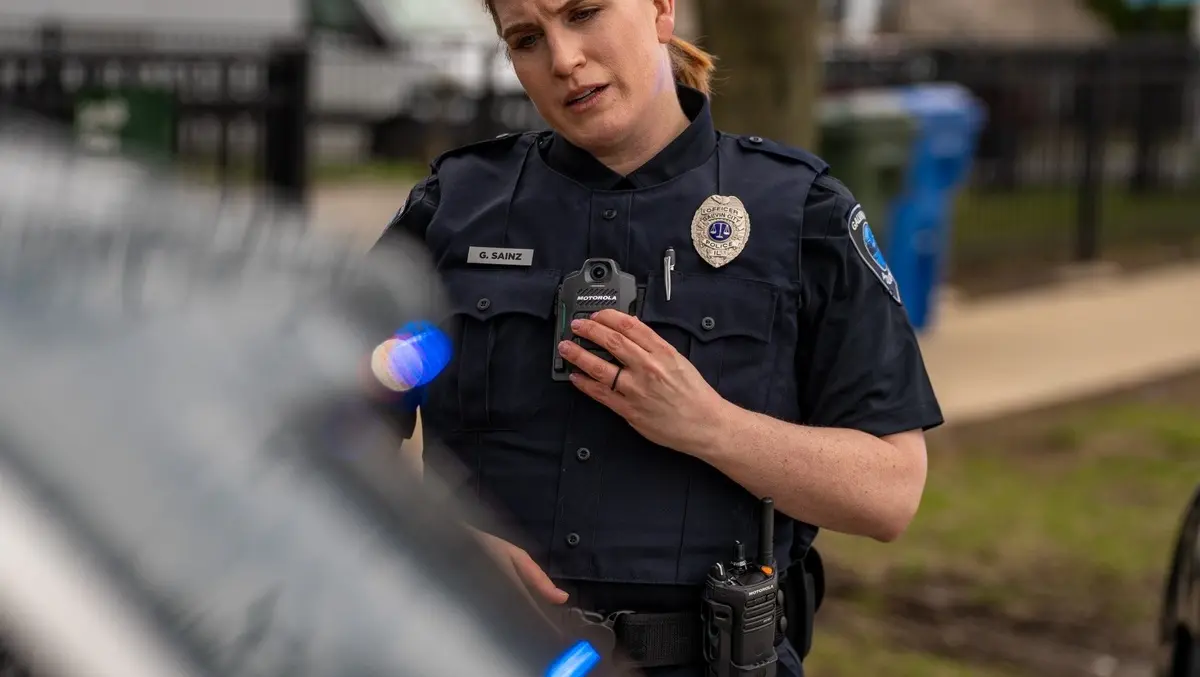
Motorola unveils SVX & Assist to boost AI in policing
Motorola Solutions has launched two new products aimed at public safety, combining voice, video, and artificial intelligence into a single device and delivering real-time AI support to police officers.
The company has introduced SVX, a video remote speaker microphone that integrates secure voice, video, and AI features, designed to work with its APX NEXT radio. Assist, the new AI support technology, has also been released, reflecting Motorola Solutions' intention to provide first responders in the United States with advanced AI tools.
SVX is described as reducing the number of devices that police officers need to carry by converging the functions of a two-way radio and body camera into a single, wireless device. Assist is positioned as a new category of human-AI collaboration for public safety, delivering contextual and personalised information to support decision-making in real time.
Mahesh Saptharishi, Executive Vice President and Chief Technology Officer at Motorola Solutions, said, "An officer's uniform is their emblem. Their emblem of service, of protection, of courage and sometimes of sacrifice, in the pursuit of making our communities safer. We've designed SVX and Assist to combine secure voice, video and AI with exceptional quality and capability for the people in uniform who protect us all."
Company research cited in the announcement indicates that patrol officers spend between 40 and 60 per cent of their reporting time entering basic details regarding people, vehicles, and property. Motorola Solutions aims to address this time-consuming aspect of policing by accelerating the process of producing factually grounded police reports while maintaining evidence quality and preserving officers' time.
"In this line of work, the worst feeling is knowing a key piece of information that would've changed your approach didn't make it to you, that it was buried somewhere. When AI can make information proactively available, instead of something that needs to be found, we can automate tasks and augment human attention. In public safety, precious time can be the consequential difference," said Saptharishi.
SVX integrates with APX NEXT and offers the latest ambient noise reduction technology to help ensure voice and video clarity in challenging environments. This enables officers to communicate or request assistance from Assist, even amid significant background noise. The device's high-definition video retains all ambient sound, maintaining the integrity of the audio-visual evidence collected during police interactions.
SVX captures two concurrent streams—radio and video communications—which Assist can unify in evidence records to enhance the comprehensiveness of event timelines. The convergence of these capabilities provides more context and clarity for incident reporting and review.
Commenting on audio quality, Saptharishi said, "Try using your everyday smartphone AI assistant with police sirens blaring; your message won't be understood. Police officers need to confidently communicate wherever they are, and the quality of audio directly affects the usability of radio and video evidence."
Assist's real-time AI features enable tasks such as querying licence plates or driver's licences and automatically searching for associated records or warnings. The AI system can detect specific keywords within radio communications—such as "shots fired"—and alert nearby officers and command centre staff, providing immediate situational updates. Additional features include live language translation between officers and community members and step-by-step guidance for handling specific incidents according to agency policies, including medical emergencies.
Stephen Martini, Director at Metro Nashville Department of Emergency Communications, said, "Metro Nashville is excited about our continued collaboration with Motorola Solutions and their vision for integrating AI into our response workflows."
The Assist AI system can aggregate and verify data from multiple sources, including radio communication, officer locations, emergency call information, dispatch records, street camera footage, and inputs from the community. This integration allows cross-referencing and aims to improve accuracy and reliability in police reporting.
Highlighting the balance between AI support and human oversight, Saptharishi explained, "An officer is trained to notice things in the field, so it's critical their reports reflect their perception of the incident, in their voice. Assist can support and verify their perspective, including identifying discrepancies. For example, Assist may flag that 'the car is black (per video footage), not blue,' a finding that must be confirmed by a human. This is about augmenting human memory versus replacing it."
He added, "We call this 'good friction.' We're designing to augment people, but it's incredibly important to make sure there is no blind trust and overreliance on AI. This is critical in the face of courtroom scrutiny and upholding justice."
Motorola Solutions stated its vision is to use AI to simplify administrative tasks through automation and to proactively provide contextually relevant information. The company plans to develop further applications for Assist across its safety and security technology portfolio. Products enhanced by Assist will feature visible emblems to ensure transparency when AI-generated information is presented for human review and verification.



